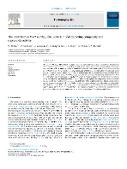The 2020 Samos Mw7 earthquake: Source model depicting complexity and rupture directivity

Author
Serpetsidaki, A
Sokos, E
Vavlas, N
Kiratzi, A
Publication date
2022Published in
TectonophysicsVolume / Issue
843 (October)ISBN / ISSN
ISSN: 0040-1951Metadata
Show full item recordCollections
This publication has a published version with DOI 10.1016/j.tecto.2022.229591
Abstract
The October 30, 2020, Mw7 Samos earthquake ruptured a north-dipping offshore normal fault, bounding the Samos basin; it accommodated-N-S extension and can be viewed as a modern manifestation of the basin evolution. It caused 118 fatalities, generated a tsunami, and caused a co-seismic uplift of 20 to 35 cm of the NW part of Samos Island. Using broadband, strong-motion, and geodetic data, we constrain the location and source geometry of the mainshock. A multiple-point source model suggests three sequential subevents providing 20 s of source duration. Our finite-fault kinematic model confirms the prevalence of large slip amplitudes (-2.4 m) along the entire ruptured area and the up-dip and westward rupture propagation. This directivity is indepen-dently confirmed by Apparent Source Time Functions inferred from regional recordings using a herein developed new variant of the empirical Green's function method. Static GNSS displacements from inland stations yield a near-surface co-seismic slip of-1 m amplitude, contributing to any interpretation of the observed island uplift. The 2020 Samos event showed that in the spatially heterogeneous oblique transtentional regions in the back-arc Aegean region, normal faults bounding the basins are capable to rupture in M7 earthquakes, provoke tsunami generation, and constitute a constant threat to the nearby coastal areas of both Greece and Turkey.
Keywords
Samos, Aegean, Rupture directivity, Earthquake, Slip model
Permanent link
https://hdl.handle.net/20.500.14178/1671License
Full text of this result is licensed under: Creative Commons Uveďte původ-Neužívejte dílo komerčně-Nezpracovávejte 4.0 International






